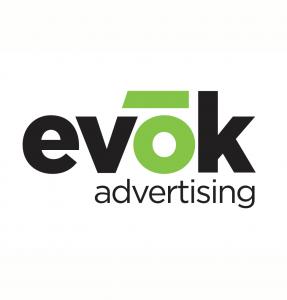Evok Credit Union Marketing Reveals How to Attract New Members
Credit unions grow by using personalized, community-focused digital marketing to boost engagement and stand out in a competitive financial market.
To remain competitive, credit unions must evolve alongside the digital landscape. Members now expect seamless, convenient, and accessible online experiences available anytime and anywhere. This shift has made digital transformation an essential and ongoing process that reshapes how financial institutions engage with members. As a result, digital marketing is no longer optional—it is a critical tool for driving growth, building loyalty, and maintaining relevance.
Modern credit union digital marketing focuses on communicating core values such as trust, community, personalized service, and financial empowerment across every digital touchpoint. A strong online presence ensures that credit unions reach members where they are most active. Today, over 76% of member and prospect interactions occur digitally, with nearly half taking place on mobile devices. This underscores the importance of having mobile-friendly, user-optimized platforms.
Personalized, relevant content is essential to building trust and loyalty. It allows credit unions to highlight their unique stories, celebrate member success, and position themselves as community-focused alternatives to traditional banks. Targeted digital strategies—including email campaigns, social media, and interactive content—help foster deeper member connections and a stronger sense of belonging.
Educational resources such as financial literacy blogs, webinars, and videos also help credit unions establish authority and empower members to make informed decisions. To attract new members, it is crucial to maintain an optimized website, a consistent social media presence, and localized SEO to appear in nearby searches while reinforcing community involvement.
Social media plays a vital role in showcasing credit union culture, community impact, and member experiences. Tailoring content to fit each platform and audience segment ensures broader engagement. For example, Instagram and TikTok are ideal for reaching younger audiences, while Facebook and LinkedIn are effective for engaging more established or professional users. A mix of educational, engaging, and service-driven content builds trust and encourages meaningful interactions. Paid campaigns can further extend reach when strategically implemented.
A credit union’s website often serves as the first point of contact. It should be professionally designed, easy to navigate, optimized for mobile use, and include clear calls to action. Incorporating member testimonials and video stories further enhances credibility and builds trust.
Success should be measured using key performance indicators such as website traffic, conversion rates, engagement, lead generation, and member retention. Tools like Google Analytics and CRM platforms offer valuable insights that guide ongoing strategy refinement and optimization.
Evok’s approach to credit union marketing blends data-driven insights with creative storytelling to enhance digital presence, strengthen member engagement, and attract new audiences. Services such as SEO, content development, social media campaigns, and website optimization are tailored to align with each credit union’s goals and growth strategies.
In today’s competitive financial environment, digital marketing is essential to credit union success. By understanding audience needs, delivering relevant and timely content, and continuously improving their approach, credit unions can expand their reach, build lasting loyalty, and thrive as trusted financial partners in their communities. For support in achieving these goals, Evok Credit Union Marketing provides strategic marketing solutions that deliver measurable results. Read the full guide today.
Larry Meador
Evok Advertising
+1 407-302-4416
email us here
Visit us on social media:
LinkedIn
Instagram
Facebook
X
Legal Disclaimer:
EIN Presswire provides this news content "as is" without warranty of any kind. We do not accept any responsibility or liability for the accuracy, content, images, videos, licenses, completeness, legality, or reliability of the information contained in this article. If you have any complaints or copyright issues related to this article, kindly contact the author above.
Chemical Enhanced Oil Recovery (EOR) Market Analysis: Emerging Trends and Strategic Developments
IBA Group and Berexia Payment Launch SoftPOS in Morocco
Scoop Wholefoods Brings Organic Living to Every Emirate
Więcej ważnych informacji
 Jedynka Newserii
Jedynka Newserii

 Jedynka Newserii
Jedynka Newserii

Prawo

Kolejne polskie miasta chcą być przyjazne dzieciom. Planują stworzyć najmłodszym dobre warunki do rozwoju
Cztery miasta w Polsce posiadają tytuł Miasta Przyjaznego Dzieciom nadany przez UNICEF Polska. Dziewięć kolejnych miast czeka na certyfikację, a w ostatnich miesiącach do programu zgłosiło się kilka następnych. Na całym świecie inicjatywa została przyjęta już w ponad 4 tys. samorządów, a w Hiszpanii objęła połowę dziecięcej populacji miast. Program UNICEF-u ma na celu zachęcenie włodarzy do traktowania najmłodszych obywateli w sposób podmiotowy, respektowania ich praw i zaproszenia ich do współdecydowania o przyszłości.
Przemysł
W ciągu roku w Polsce ubyło 500 przedsiębiorstw odzieżowo-tekstylnych. Problemem są spadki zamówień z Europy Zachodniej i wzrost kosztów

Wartość rynku odzieżowego w Polsce wynosi 66,9 mld zł, z czego 10 mld zł to wartość krajowej produkcji – wynika z danych PIOT. Od czasu pandemii branża mierzy się z szeregiem wyzwań, wśród których najpoważniejsze to wzrost kosztów pracy i produkcji, przerwane łańcuchy dostaw i spadek zamówień – zarówno w kraju, jak i za granicą, a także wzrost nieuczciwej konkurencji na rynku, czyli głównie importu z Chin. Skala wyzwań sprawia, że w ubiegłym roku z rynku zniknęło 500 firm. Producenci odzieży apelują do rządu o wsparcie.
Handel
D. Obajtek: Orlen powinien być o 30–40 proc. większą spółką. Byłoby to z korzyścią dla konsumentów

Orlen jest największym polskim przedsiębiorstwem. Jego przychody ze sprzedaży w 2024 roku wyniosły blisko 295 mln zł, a rok wcześniej – ponad 372 mln – wynika z raportu Rzeczpospolitej „Lista 500”. W ubiegłorocznym rankingu Fortune 500 uwzględniającym największe korporacje znalazł się na 216. miejscu na świecie i 44. w Europie. Według Daniela Obajtka, europosła PiS-u i byłego prezesa Orlenu, spółka powinna jeszcze urosnąć, tym samym gwarantując konsumentom szereg korzyści, a także przyspieszać inwestycje m.in. w obszarze petrochemii i energetyki zero- oraz niskoemisyjnej.
Partner serwisu
Szkolenia

Akademia Newserii
Akademia Newserii to projekt, w ramach którego najlepsi polscy dziennikarze biznesowi, giełdowi oraz lifestylowi, a także szkoleniowcy z wieloletnim doświadczeniem dzielą się swoją wiedzą nt. pracy z mediami.









.gif)

 |
| |
| |
|